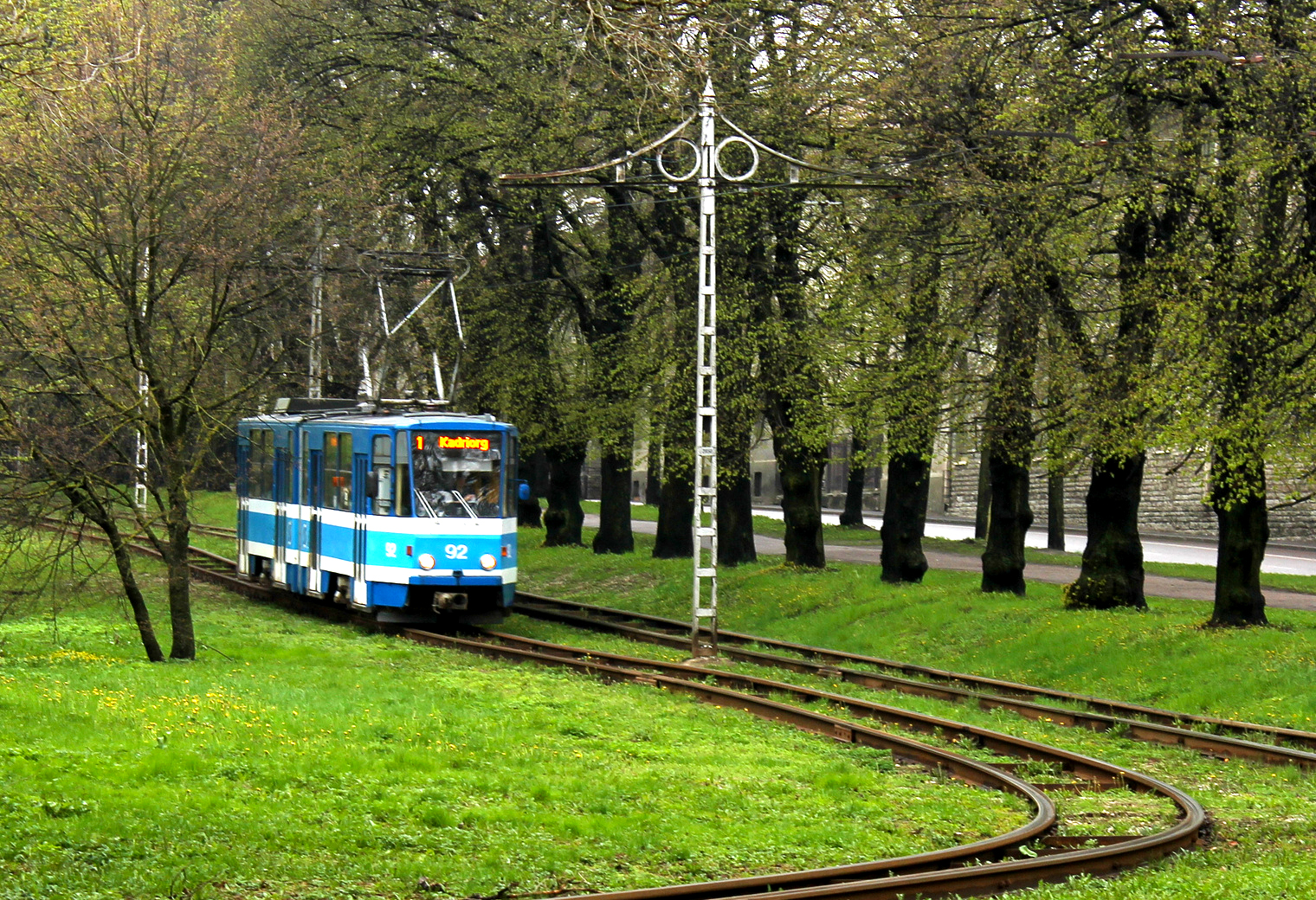Tallinn is the capital and largest city of Estonia, a small country located in northern Europe with a population of around 1.3 million people. The capital itself has around 400 000 inhabitants. But despite its size, the country and its capital is moving towards a cleaner and more progressive approach towards transportation.
In the summer of 2012 Estonia started to work on a public charging network for electric vehicles – with an easy subscription-based payment method for its users. After building fast-charging stations in every city and larger village, Estonia became the first country to offer a nation-wide charging network for electric vehicles last year. That very same year, in 2013, Tallinn introduced free public transportation to all of its residents and thus became the European “capital of free public transport”. Today, Tallinn still holds the crown as the largest city in the world to have free public transport.
The authorities in Tallinn believed that a free public transport scheme would boost economic development, encourage people to shift from cars to buses and trams and thus cut congestion and traffic emissions. Now one year on, what exactly are the results?
Free public transport stopped a downward trend
The public transportation system in Tallinn consists of buses, trams, trolley buses and commuter trains. Tallinn's system of about 480 public transport vehicles serves around 400 000 people, making it one of the largest systems in Europe.
Public transport share was at around 40 percent before the scheme was introduced. That was even then a relatively high level compared to other European cities. The ticket costs were also fairly cheap, and pensioners and youths already benefited from free public transport in the city. Despite all this the public transport share was on the decline and had shown a negative trend for two decades.
But since the introduction of the fare-free scheme there have been a 12.6 percent increase in travels. And less wealthy neighborhoods in Tallinn has seen an even bigger increase. So in spite of initial worries the scheme has clearly been successful in persuading more people to use public transportation.
Strong public support
One popular argument against free public transport schemes is that the quality of the service and the comfort for passengers would take a substantial hit. But according to passenger surveys people in Tallinn feel differently. For the people of Tallinn, public transportation travel has become better and more convenient since the introduction of the free-fare scheme. But the increased passenger satisfaction is also the result of investments made in new and modern buses as well as a new electrified rail line on a previously neglected link. Tallinn has also increased the service frequency and designated more priority lanes for buses in the city, which no doubt has further increased the satisfaction.
The free-fare scheme in Tallinn is the result of a referendum which was held in 2012. In the referendum 75.5 percent voted for the scheme, and 24.5 percent voted against. Back then several political parties were skeptical to the idea of free public transport. Many politicians believed that it would be too expensive or simply unfeasible to accomplish. But the idea of a free-fare scheme had a strong public support, and thanks to the result in the referendum the scheme was approved. Today no one wants to abolish the scheme – that’s how successful it has been. Allan Alaküla, head of Tallinn’s European Union Office in Brussels, says there has been a “political shift” for free public transport. There is now “no party promising to abolish the free ride for Tallinners,” he says.

The photo shows a tram in Tallinn, Estonia. Photo credit: Greta Tamošiunaite (cc).
Economic costs and benefits
The introduction of free public transportation was no hasty decision. The various costs and potential benefits had been carefully assessed and debated.
Before the free-fare scheme the city's annual public transportation budget was €53 million. But revenues from ticket sales amounted to only €17 million, of which €5 million came from people living outside Tallinn. The public transport system clearly didn’t pay for its own costs.
By introducing free transport in Tallinn, the city expected incur an additional cost of €12 million – which mainly represents the loss of revenue from ticket sales (tourists and people living outside Tallinn still have to pay for their tickets). City officials deemed this to be a reasonable price to pay, especially when considered against the potential environmental, economic and social benefits of such a scheme.
City officials believe that the free-fare scheme has resulted in an economic boost for the local businesses in Tallinn. “We really provide an incentive for stimulation of the local economy,” says Alaküla. “We observed already that people tend to spend more if their mobility is free. They go out more in the evenings and weekends.”
There has also been other, more major economic benefits. Between January and November 2013, officials reported that around 10 000 new residents had been registered in the city (the latest numbers show 15 000 new residents). This was a number which was significantly higher than previous time periods. It’s therefore presumed that the increase is mainly a result of the free-fare scheme. Each additional 1000 residents provides the city with €1 million in tax revenue. So the new tax revenues help cover a large part of the additional costs of the free-fare scheme. And with an estimated 30 000 unregistered residents in Tallinn there is a huge potential for even more tax revenues.
Environmental and social benefits
A fare-free public transport obviously helps improve accessibility and mobility for a city’s residents – especially for economically disadvantaged people. It’s harder, and still too early, to quantify the long-term environmental benefits of free public transport. But even here one can imagine some obvious positive results as people shift away from cars, leading to less pollution and congestion.
Traffic congestion was down 15 percent during the first quarter of 2013, compared to levels at the end of 2012. Overall, car use throughout Tallinn has been reduced by 9 percent. Alongside the free-fare scheme, parking-fees in the city was increased sharply to further discourage the use of cars.
It’s expected that the free-fare scheme will result in a reduction of CO2 emissions by 45 000 tons every year. Another benefit is a decrease in noise pollution when less cars are on the roads and electric public transport vehicles - trolley buses and trams – are introduced. Dedicated bus lanes also help to make the traffic move more smoothly around the city. It also has the added benefit of decreasing the average trip length by 10 percent, making people get to their destination much faster than before.
After one year, free public transport has been a success in Tallinn. The free-fare scheme has stopped a downward trend for the city’s public transportation system and encouraged more people to leave their cars at home. The experiment in Tallinn has been so successful that other Estonian municipalities are now also interested in introducing similar free-fare schemes for its own residents. The results in Tallinn are also encouraging because it might help speed up plans for similar free public transportation schemes in other major cities, in Europe and around the world. Tallinn acts as a successful, full-scale real-world example that free public transport is possible and that it can have substantial social, environmental and economic benefits for a city.


Recommended Comments
There are no comments to display.
Join the conversation
You can post now and register later. If you have an account, sign in now to post with your account.